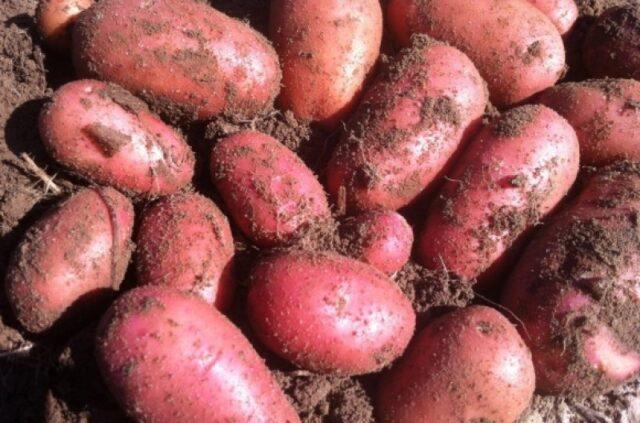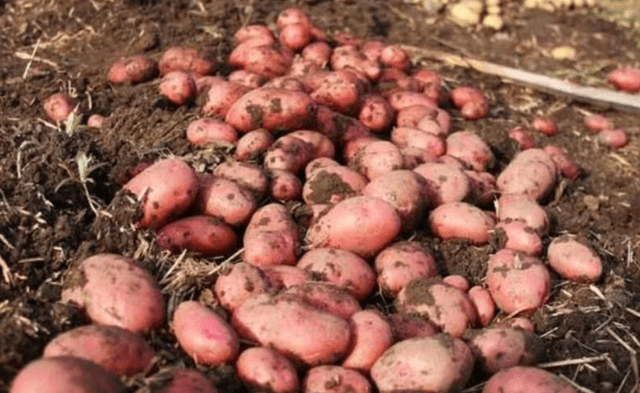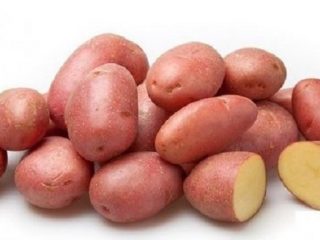Content
The vast majority of potato varieties bred in Belarus are well suited for Russian climatic conditions. Therefore, they are successfully “mastered” by domestic gardeners. One of the new products of “foreign” selection is the Palace potato. In its description, attention is immediately drawn to the early ripening of tubers, ease of cultivation and immunity to many diseases and pathogens that are dangerous to the volume and quality of the future harvest.
History of appearance
The Palats potato variety was created in Belarus by specialists from the local Scientific and Production Center of the National Academy of Sciences for potato and vegetable growing in 2017. It was included in the domestic Register of Breeding Achievements after all the necessary variety tests four years later. It is officially recognized as the most suitable for cultivation in the Grodno region.
In Russia, Palace potatoes appeared on the public market a season later. At the same time, an application was submitted for its registration in the State Register, but so far all the required procedures have not been completed.

Almost all Belarusian potato varieties are successfully taking root in Russia
Description of the Palats potato with photo
The Palace potatoes look quite presentable. But the appearance of the tubers is not all that a gardener should consider when choosing a new variety to plant on his own plot.
Bush
The bushes are low (40-50 cm). The stems are erect, which ensures compact plants. The leaves, on the contrary, are larger than those of most varieties and hybrids; there are few of them. The flowers are a rich pink-lilac hue, the inflorescences are bright and catchy, “lush”. The Palace potato bushes cannot be called thickened; the leaf plates are completely “opened”.
Tubers
The weight of tubers even in one “nest” varies greatly (70-150 g). But there are practically no “little things” that are unsuitable for long-term storage and inconvenient to clean. The percentage of “marketable” potatoes is very high – 95%.
The shape of the tubers is regular, from round to elongated oval. The peel is thin, pink or pale red, quite durable, almost smooth.

There are very few “eyes”, they are mostly superficial
The pulp is creamy or yellowish, elastic and dense, with a relatively low starch content (14%). Accordingly, Palace potatoes retain their shape during any heat treatment. Some even consider its poor or moderate “cookability” to be a disadvantage of the variety.
Characteristics of potatoes Palace
The main goal of the breeders who created the Palace potato was to obtain a high-yielding, early-ripening variety, the productivity of which minimally depends on the vagaries of the weather and other negative “external” factors. Gardeners do not yet have much experience in growing it, but the available data from variety trials and reviews suggest that it has been achieved.
Taste qualities of Palats potatoes
The taste of Palats potatoes in Belarus is rated as “good” or “excellent”. The dense pulp does not have the slightest “hint” of wateriness or mealy taste, but there are light sweetish-creamy notes.
The tubers are universal in their culinary purposes. However, professional tasters classify it as category AB (the pulp after boiling does not “fall apart” when cut). In everyday life, Palace potatoes are successfully used for boiling, frying, baking, stuffing, any first courses and side dishes.

Tubers are quite suitable for homemade preparations and freezing.
Ripening time for Palats potatoes
Palace is an early ripening variety. The harvest “en masse” ripens within 50-70 days after the planted tubers give “friendly” shoots. Such a “scatter” in terms can be easily explained by the nuances of the regional climate, the influence of weather factors during the season, and the quality of planting care. The first “sample” from the beds can be taken after 45-50 days from the moment of “mass” germination.
Productivity
According to data obtained during variety testing in Belarus, the yield of Palats potatoes when cultivated on an industrial scale is 550-600 centners per hectare.On personal plots, taking into account that 8-10 tubers are formed on one plant, you can count on 1.5-2 kg per bush or 250-400 kg per hundred square meters.

The variety’s yield is not record-breaking, but this is fully compensated by its “reliability”
Growing regions
Since the Palace potato is not yet listed in the Russian register of breeding achievements, there are no “officially recommended” regions recognized as the most suitable for its cultivation. But, based on the varietal characteristics, it can be argued that it is able to “take root” and produce a harvest in almost any territory, if farming is possible there in principle. Thanks to their early ripening, the tubers have time to ripen even in northern regions with short, cool summers.
Disease resistance
The general hardiness of the Palace variety includes good resistance to pathogenic microflora and pest attacks. In addition, breeders provided it with “innate” protection against golden root nematode, bacterial cancer and most viral diseases that “kill” plants.

Leaves affected by late blight quickly dry out, the development of bushes and the ripening of tubers stops
Pests are also not too interested in Palats potatoes. This applies to wireworms, potato flea beetles, and leafhoppers. The only exception is the Colorado potato beetle. To prevent its invasion of the beds, targeted prevention is needed.
Advantages and disadvantages
Potatoes Palace are characterized by good transportability and keeping quality. In optimal or close to optimal conditions, 95% of tubers retain their “marketable appearance” and health benefits.

Potato Palace is a successful exception to the rule that early-ripening varieties do not differ in outstanding taste
Pros:
- compactness of plants, their suitability for “dense” plantings;
- general endurance, including drought resistance, the ability to tolerate heat, cold, and sudden temperature changes;
- the presence of “innate” immunity against the golden nematode, incurable viral and bacterial diseases, good resistance to fungal microflora;
- undemanding regarding growing conditions and agricultural technology;
- early and “friendly” harvest ripening;
- good keeping quality and transportability;
- attractive “appearance”, a high percentage of “marketable” tubers, a minimum of “trifles”;
- versatility for culinary purposes, outstanding taste;
Minuses:
- tendency to become infected with late blight of leaves;
- the possibility of an attack by the Colorado potato beetle in the absence of prevention;
- poor “cookability” of tubers.
Landing rules
Potato Palace is insensitive to drought and does not suffer from direct sunlight. To plant it, choose an open area, without shading. The quality of the soil is also important - a substrate that combines looseness and nutrition, with a neutral or slightly acidic pH, is best suited.
The time for planting Palace potatoes depends on the climate in the region. You need to wait until the soil warms up to 8-10 °C, and the risk of return frosts is minimized. In central Russia, the procedure can be planned for the end of April or the first ten days of May.
The Palace potato bed was dug up last fall, adding humus in the process. 3-4 days before planting, it is loosened by adding complex fertilizer to the soil.
The tubers are pre-germinated. This process takes 4-5 weeks. To prevent late blight infection, Palace seed potatoes are treated with a solution of any fungicide. Spraying with a biostimulant is also recommended; these drugs have a positive effect on germination, the rate of plant development, and the taste of tubers.

The optimal length of the sprouts is 2-3 cm; if they stretch out more, they will most likely break
To plant Palace potatoes, choose a dry, warm day. It is advisable to throw a handful of sand or other drainage material at the bottom of the hole so that water does not stagnate near the tubers. You can also add a little humus mixed with ground eggshells and sifted wood ash.

Planting Palace potatoes follows a standard algorithm
How to care
Caring for Palace potatoes will not take a gardener a lot of time and effort. Agricultural technology includes only basic activities:
- Watering. Drought resistance allows Palace potatoes to cope with natural precipitation. But there are periods when it especially needs water, and the volume and quality of the harvest directly depends on this. The beds must be watered when the seedlings reach a height of 10-12 cm, at the moment the buds appear and 3-4 days after the end of flowering.
- Feeding. Palace potatoes are sensitive to excess nitrogen fertilizers in the soil, so it is not advisable to use natural organic matter for fertilizing.Since it ripens quickly, it is enough to apply fertilizer once - 4-5 days after flowering, when the tubers form.
- Hilling. The procedure is carried out as needed, but not more than twice a month. Plantings are first planted when the Palats potato stems grow to 12-15 cm in height.

Hilling helps maintain normal air exchange
Harvest and storage
The approximate harvest date for Palats potatoes is the last ten days of August. But it is better to focus on the condition of the aboveground part of the plant. The tubers fully ripen, acquiring the most intense taste when the stems and leaves completely dry out, lying on the bed.

Some gardeners practice mowing the tops about a week before harvesting, but then the bushes will be more difficult to find in the garden
Palats potatoes are dug up “by hand” with a pitchfork or shovel, although, in principle, mechanized harvesting is also possible. The harvest is immediately sorted, rejecting “substandard” ones and setting aside planting material separately for next year. Potatoes selected for storage are scattered to dry, leaving for several days outside under a canopy or in a cool room with good ventilation. Drying before storage is necessary, in particular, in order to get rid of soil stuck to the tubers.
It is best to store Palace potatoes in a cellar or basement.It’s easier to create optimal conditions there:
- air humidity about 70%;
- temperature 2-4 °C;
- darkness;
- constant access of fresh air.

Any container that allows air to pass through is suitable for storing Palace potatoes.
Conclusion
Potato Palace, judging by official descriptions and experience of its cultivation, can be called a variety suitable for inexperienced and “lazy” gardeners. You will have to spend a minimum of time and effort on caring for the plantings; plants get sick extremely rarely; the volume and quality of the harvest does not suffer much due to the negative impact of weather factors and the characteristics of the local climate.
Reviews from gardeners about Palace potatoes








